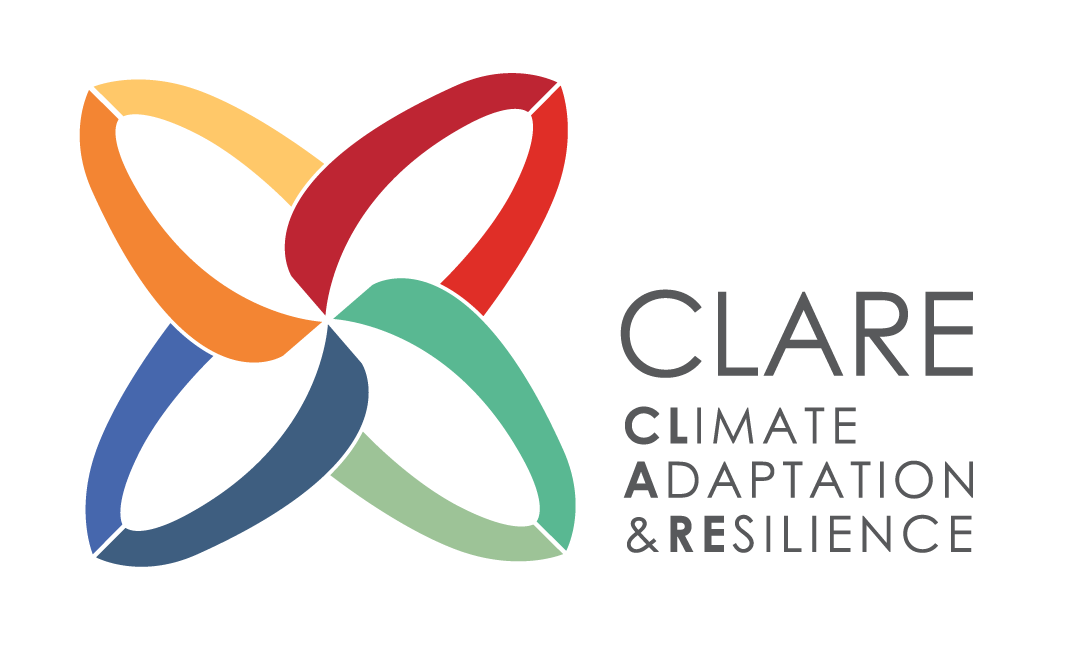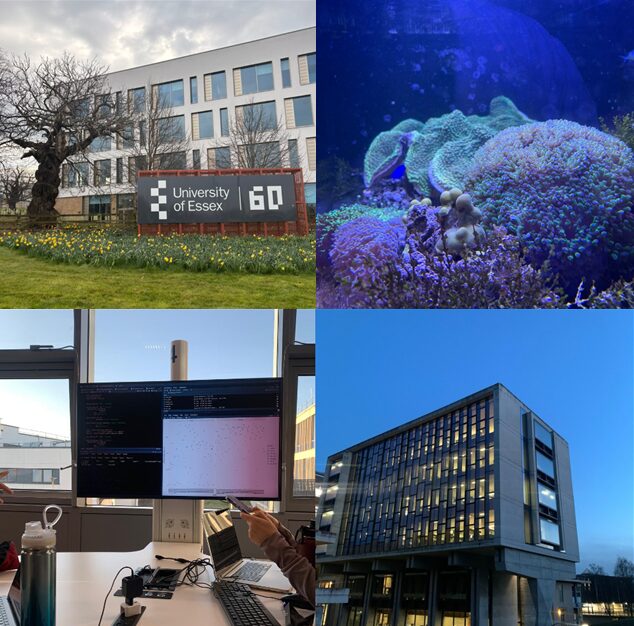
From the lands where flowers never sleep, we met the silence before the bloom
/
A reflection by ClimateREEFS Early Career Researchers, Vic Lorence Madariaga (University of the Philippines) and Janet Rande (Pattiumura University)
We have always been trying our best to hide from the sun since its heat is intense in the tropics where we are from. However, the sun did not seem to be working when we visited the United Kingdom (UK) in the early spring of 2025. Never before had we yearned more for the warmth of the sun. Although we were cold most of the time, we had the most amazing six weeks in the UK, hosted by the University of Essex.

The main goal of our visit was to train on methods of biodiversity assessment in coral reef ecosystems using environmental DNA (eDNA). eDNA allows us to detect many different organisms, from small microbes to fish, without having to see or catch them directly. Under the supervision of Prof. Alex Dumbrell and the guidance of Dr. Michela Lever, we learned how to extract DNA sequences from water samples taken from our ClimateREEFS project sites across Indonesia and the Philippines. We used advanced molecular techniques and lab equipment to translate field samples into raw sequences. We learnt to code and did cool bioinformatics to make sense of the DNA sequences, which gave us the unique genetic “barcode” of each organism. We were then able to identify which species were present, and allowed us to compare species diversity across project sites. This is one way that we could identify adaptive coral reefs and inform those that depend on the ecosystem to the ever-looming threat of climate change.

Our training in the UK is a part of the Early Career Researcher capacity strengthening stream of the ClimateREEFS project. We, however, were not just cooped up in the lab processing eDNA samples. We also tried a slice of British life. During weekdays, we worked in the lab and went to Tesco to replenish our food supply. We cooked our own food because we preferred not to have bland meals every time (no offense to the British). We missed MSG! We also had lots of side quests on the weekends. On our first weekend, we went to the historic city center of Colchester, which is apparently the oldest recorded town in Britain. We visited Colchester Castle, and we had a quintessential British meal in the park – a cold sandwich. We walked along the River Colne to visit a cute town called Wivenhoe near the university on our second weekend. It was like a ghost town because there was no one on the streets, a shock to our systems that were more accustomed to the bustling Southeast Asian neighborhoods.

We also had the chance to explore other parts of the UK by train. We were truly impressed by how well-connected everything is through the railway system. Compared to the public transportation in our home countries, travelling across the UK felt incredibly easy and hassle-free. Our first call was London. We visited the Natural History Museum and the British Museum, where we saw real dinosaur fossils and relics from ancient civilizations. We wandered through the city, finally seeing iconic landmarks we had only encountered in textbooks – Buckingham Palace, Westminster Abbey, the Houses of Parliament, Big Ben, the Thames, the London Eye, the Tower of London, and Tower Bridge. We even caught a glimpse of the infamous London Bridge, a place we’ve known since preschool thanks to the nursery rhyme. Our inner children were literally bursting with joy at the sight of it all. By the end of the day, we had walked over 21 kilometers—our feet were tired, but our hearts were full.
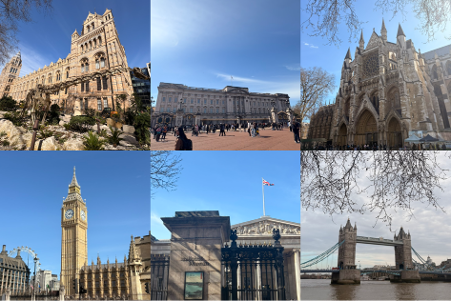
Our next stop was Cambridge—a university so influential, it feels as though the town was built around it. We wandered through its historic grounds and visited iconic colleges like Trinity, King’s, and Queen’s. We stood in awe at the site of the laboratory where Watson and Crick unveiled the structure of DNA, a discovery that gave birth to modern molecular biology. We also visited the place where J.J. Thomson discovered the electron, and walked in the footsteps of Sir Isaac Newton, who laid the foundations of classical physics during his time at Trinity College. Cambridge is truly a university where scientific breakthroughs have shaped the course of human knowledge – its quiet corners and historic halls have witnessed some of the most important moments in scientific discovery.
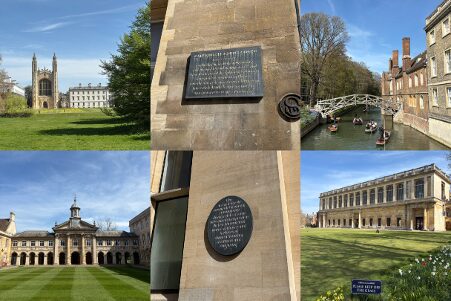
For our final stop, we headed up north to Leeds, where we were warmly welcomed by Prof. Maria Beger, one of the Principal Investigators of the ClimateREEFS project. We took a break at Ilkley Moor, hiking around and spotting a small stone circle reminiscent of Stonehenge. The beautiful natural surroundings provided a refreshing change from our city-centered travels. At the University of Leeds, we met with Prof. Beger’s lab group, exchanging insights about our research and learning from theirs. During lunch, we enjoyed a classic British jacket potato, which felt especially comforting on a chilly day. Connecting with a fellow research team in such a welcoming and collaborative environment was a memorable way to wrap up our journey.
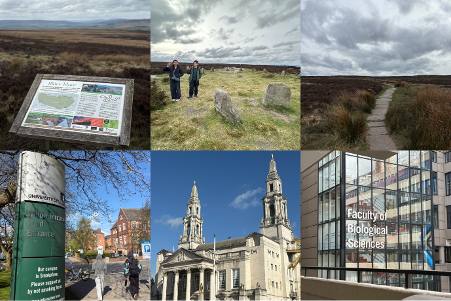
Working alongside scientists from different backgrounds gave us the chance to chat about biodiversity conservation, research ethics, and environmental policies in the UK versus Southeast Asia. The friendly community at the University of Essex and more generally in the UK, made us feel welcome and at home. This cultural exchange was just as valuable as the technical training—it reminded us that science connects people everywhere and helped us work together on big challenges like climate change and biodiversity loss.
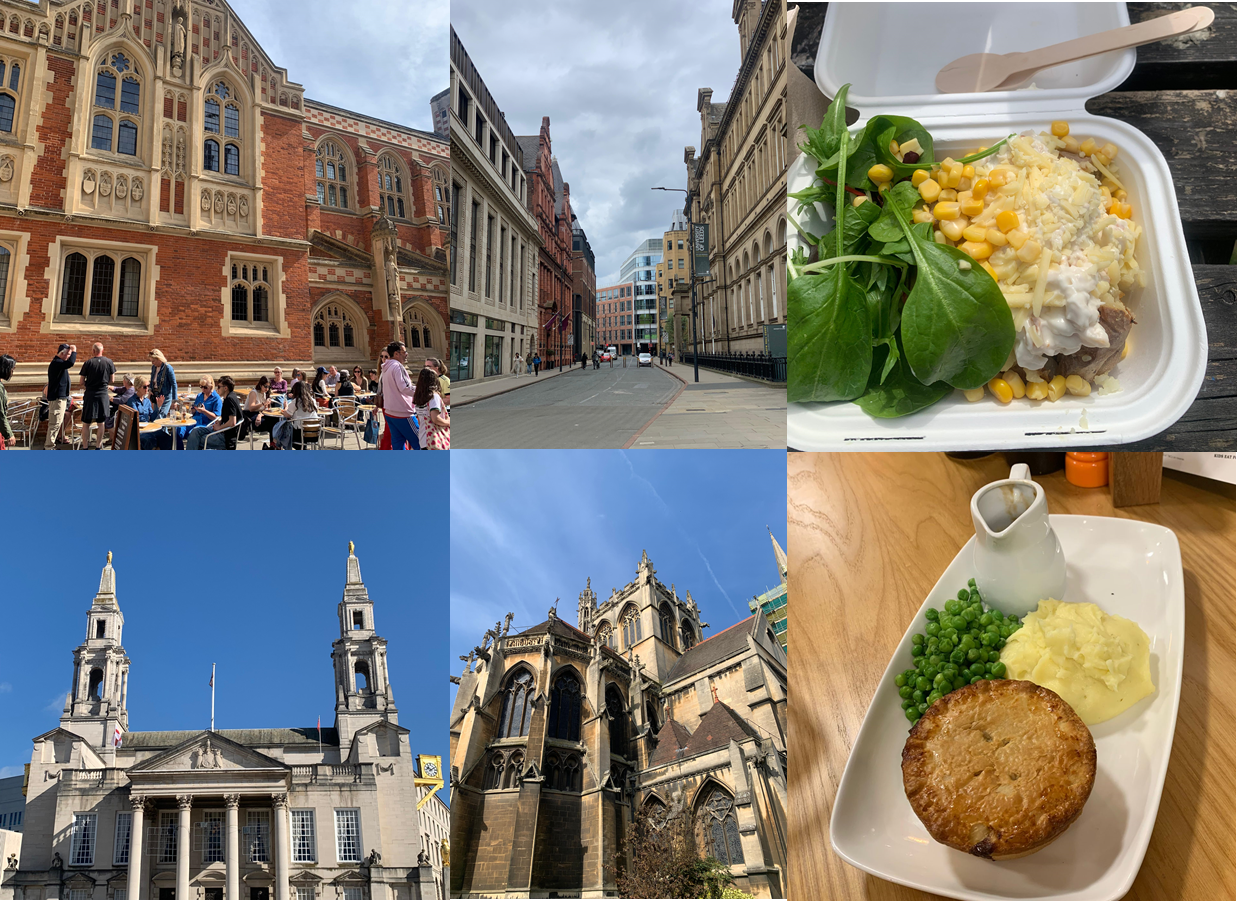
Our time in the UK didn’t just make us better at handling eDNA samples. It also boosted our confidence with various molecular techniques we use back home. Now, we’re returning with new skills and fresh motivation. The knowledge we gained will help us do cutting-edge research and contribute to protecting coral reefs globally. We hope to use what we learned to better understand marine ecosystems and support policies that protect these important habitats for the future. Most importantly, this experience gave us a deeper appreciation for the careful work behind biodiversity research and made us feel more ready to apply these advanced methods in conservation efforts back home.
For us, this journey was more than just learning new lab techniques or visiting iconic places in the UK—it was about stepping out of our comfort zones and discovering new parts of ourselves. Coming from tropical countries, everything felt different at first—the cold weather, the quiet streets, the unfamiliar lab routines, and even the way people spoke. There were moments of doubt and hesitation, especially in the early days. But as time passed, we began to find joy in small victories—like finally understanding a tricky protocol or having meaningful conversations with people from different backgrounds. This experience reminded us that we belong in this global scientific community. It gave us a quiet but powerful confidence—not just as researchers working on coral reef conservation, but as individuals capable of adapting, learning, and growing.
From lands where flowers never sleep, we’ve always known the sun as something to escape – its intensity – a constant presence in our tropical lives. But in the UK, wrapped in the cold hush of late winter turning into spring, we found ourselves yearning for the warmth we once fled. In the unfamiliar stillness, we met the silence before the bloom. It was in the quiet corridors of the lab, in the soft light of grey skies, and in the slow unfolding of new friendships and knowledge, that we began to grow in ways we didn’t expect. Like the first buds of spring pushing through frost, our experience here marks the beginning of something that will continue to blossom long after we’ve returned home—both in our science and within ourselves.
Categories
CLARE Themes
CLARE Topics
Published
CLARE Projects
CLARE Partners

